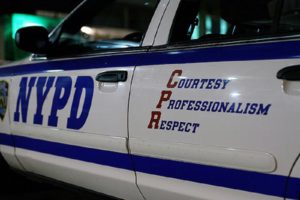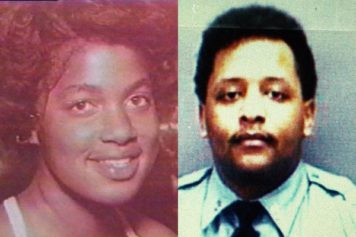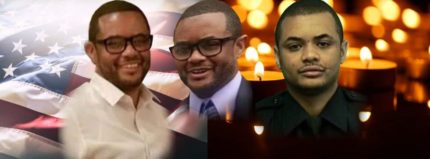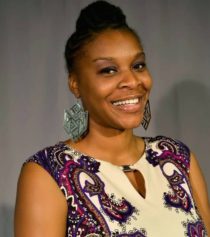What if rotten, corrupt and racist police departments are working as they were designed to?
When the callous white police officer responds to the Black Lives Matter movement with the retort that “Blue lives matter,” is that a heartfelt sentiment? What of the Black cop? Although certainly there are African-American police officers who have internalized the racial oppression of a career that originated with the slave patrols, others have refused to betray their Blackness and have challenged the system instead.
There is a reason Black police officers have Black police associations. Obviously, the dominant law enforcement associations and unions fail to address the needs of Black officers. But for that badge, hat and gun, Black officer, you are one of the multitude of Black faces you patrol — the folks who get stopped and harassed for doing nothing, and who may even find themselves brutalized and shot dead if they aren’t careful.
The police culture is all about the blue mentality, but it is also a white mentality, where a culture of racism and brutality have been ingrained since the plantation days. Like a gang, it is an indoctrination process, with punishment and retaliation for those who fight against the system and refuse to abide by the rules. Changing the institution from the inside is laudable, though a hard sell. Consider the case of Edwin Raymond, a Black NYPD officer who was the subject of a New York Times Magazine story by Saki Knafo.
Raymond — the son of a Haitian immigrant family and a racially- and socially-conscious Black man — believed he could reform “New York’s Finest” internally. And he was in for a rude awakening. Ultimately, he joined a lawsuit of a dozen Black officers who sued their own department for racism, even secretly recording conversations he had with his superiors. Raymond and others refused to follow the NYPD policy of quotas for arrests and summonses, a race-based practice in which officers were pressured to boost arrests of Blacks and Latinos but stay away from whites and Asians.
An award-winning officer who placed at number eight on the sergeant’s exam, Raymond was passed over for promotions and given abysmal performance reviews because he would not toe the line and make a sufficient number of arrests. Raymond was a Black man in a police force that is only 16 percent Black and whose top ranks are less than 7 percent Black, according to the Marshall Project. The population of New York City is only one third white, but a mostly white police force patrols over an overwhelmingly Black, Latino and Asian population.
Here is a conversation Raymond secretly taped with his supervisor, Sgt. Martin Campbell, also Black, over a bad performance review that Campbell was ordered to write by his own boss:
What is the issue with me?’’ he asked Campbell. ‘‘Just the activity, the quota?’’
Campbell laughed. ‘‘What do you think, bro?’’
‘‘Man,’’ Raymond said.
‘‘Honestly, what do you think?’’
‘‘But it has to be more,’’ Raymond said, “because technically, when it comes to numbers—”
‘‘No, no, no,’’ Campbell said. ‘‘There’s not more. That’s it.’’
And yet that wasn’t it — at least, Raymond didn’t think so. There were other officers in the district, not many, but some, whose numbers were even lower than his.
‘‘You really want me to tell you what I think it is?’’ Campbell asked.
‘‘Of course, because I need to understand this.’’
‘‘You’re a young black man with dreads. Very smart, very intelligent, have a loud say, meaning your words is loud. You understand what I’m saying by that?’’
‘‘Yeah.’’
‘‘I never seen anything like this, bro,’’ Campbell said.
Meanwhile, even as Raymond was denied promotions, he was asked to participate in a process where Police Commissioner William Bratton asked people on and off the force to brainstorm ideas for improving the police department. Bratton, who ran the police in the 1990s under the infamous Mayor Rudolph Giuliani, was a primary cheerleader of “broken windows” policing that has ensnared young Black and Latino men in the criminal justice system over minor, noncriminal “quality of life” offenses — if they are offenses at all.
Hundreds of thousands of innocent men of color were targeted in a “stop and frisk” policy that labeled them as suspicious, potential criminals because of their skin. And now, Mayor Bill de Blasio has asked Bratton to return to his old job. Raymond recalled when he met with Deputy Commissioner of Personnel Michael Julian and other NYPD bigwigs to make the case for his own promotion:
I want to hire a thousand of you,’’ [Julian] said. He hadn’t conjured that exact number out of thin air. Julian, who is white, had recently been assigned the task of coordinating the recruitment of 1,000 black officers. That summer, the 57 black men and 25 black women who graduated from the academy represented less than 10 percent of the graduating class — the lowest percentage of black graduates in 20 years. In an interview with The Guardian, Bratton blamed the scarcity of black recruits on the prevalence of criminal records in black neighborhoods. Too many of the city’s black men had ‘‘spent time in jail and, as such, we can’t hire them,’’ The Guardian quoted him as saying. (Bratton later said the newspaper took the quote out of context.)
Along with the other executives at the hearing, Julian had already reviewed Raymond’s documents. He noted that Raymond had called in sick only once in seven years. ‘‘You don’t get sick,’’ he said, his voice rising with enthusiasm. ‘‘There’s a lot of good about you.’’
Black cops are pressured to arrest their own people for no reason at all but to fill a bogus arrest quota. And they are kept down by a white leadership structure. And then we wonder why there is a problem in law enforcement, or why there is a need for a Black Lives Matter movement.



